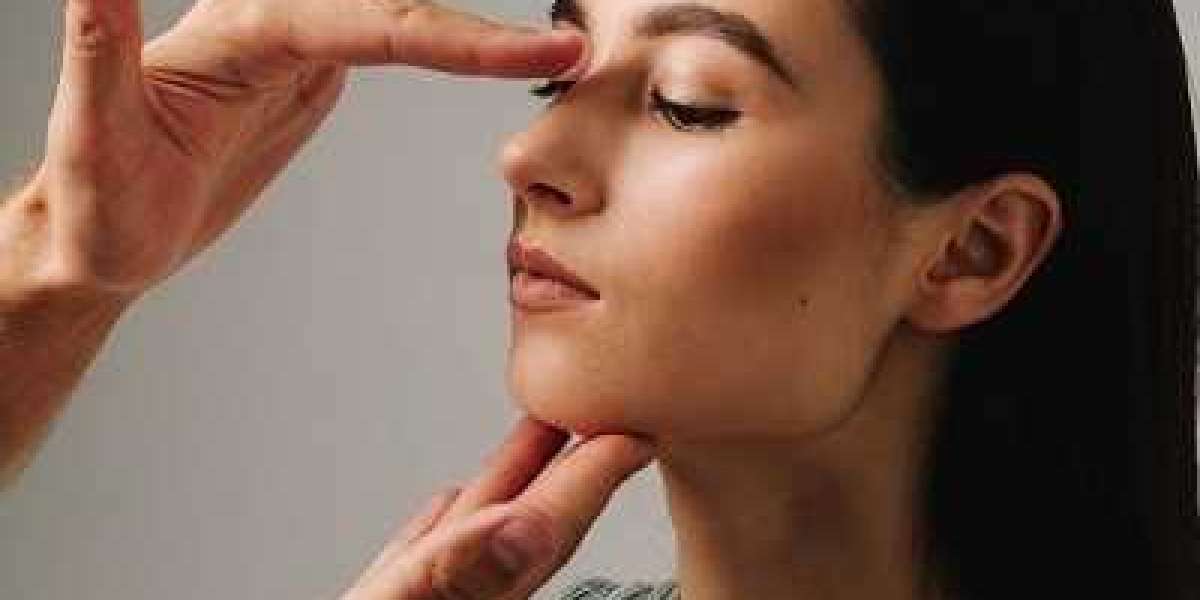Rhinoplasty, commonly known as a nose job, is a versatile surgical procedure that reshapes and enhances the nose's appearance or corrects its function. In Islamabad, patients have access to a wide range of rhinoplasty options tailored to meet both cosmetic and medical needs. With advanced medical facilities and skilled surgeons, Islamabad has become a sought-after destination for individuals seeking high-quality rhinoplasty procedures.
In this blog, we’ll explore the various types of rhinoplasty in Islamabad, their purposes, and what to expect from each.
1. Cosmetic Rhinoplasty
Cosmetic rhinoplasty focuses on improving the aesthetic appearance of the nose. It is one of the most popular types of rhinoplasty and addresses a variety of concerns.
a. Reduction Rhinoplasty
This procedure reduces the size of the nose, including the width, length, or prominent features like a nasal hump. It creates a more proportionate and harmonious appearance.
b. Augmentation Rhinoplasty
For individuals with a flat or underdeveloped nose, augmentation rhinoplasty adds volume using cartilage grafts (often from the septum, ear, or rib) or synthetic implants to achieve a balanced look.
c. Tip Rhinoplasty
Tip rhinoplasty reshapes the tip of the nose, addressing concerns such as a bulbous, droopy, or asymmetrical tip. This procedure is highly precise and focuses solely on the nasal tip.
d. Ethnic Rhinoplasty
Ethnic rhinoplasty is designed to enhance the nose’s aesthetics while preserving the unique characteristics of an individual’s ethnicity. It caters to patients from diverse backgrounds, ensuring natural-looking results.
2. Functional Rhinoplasty
Functional rhinoplasty is performed to correct issues that affect the nose’s ability to perform its primary function: breathing. It is often combined with cosmetic rhinoplasty for a comprehensive approach.
a. Septoplasty
Septoplasty is a surgical procedure to correct a deviated septum, which can obstruct airflow and cause breathing difficulties. It straightens the nasal septum, improving both function and comfort.
b. Nasal Valve Repair
This procedure addresses collapsed or weakened nasal valves, which can restrict airflow. Nasal valve repair restores proper function by strengthening or reconstructing the nasal passages.
c. Turbinate Reduction Surgery
Enlarged nasal turbinates can cause chronic congestion and breathing issues. Turbinate reduction surgery reduces the size of the turbinates, improving airflow without compromising their function.
3. Reconstructive Rhinoplasty
Reconstructive rhinoplasty is performed to repair and restore the nose following trauma, injury, or previous surgeries.
a. Trauma Reconstruction
In cases of nasal fractures or deformities caused by accidents or injuries, reconstructive rhinoplasty restores both the appearance and functionality of the nose.
b. Post-Tumor Surgery Reconstruction
Reconstructive rhinoplasty can also address defects caused by the removal of tumors, ensuring the nose’s structural integrity and aesthetic appeal.
c. Cleft Lip and Palate Rhinoplasty
For individuals born with a cleft lip or palate, this procedure corrects nasal deformities associated with the condition, enhancing both function and appearance.
4. Revision Rhinoplasty
Revision rhinoplasty, also known as secondary rhinoplasty, is performed to correct or refine the results of a previous rhinoplasty. It is often more complex due to the presence of scar tissue and altered nasal structures.
a. Minor Revision
This involves small adjustments to address asymmetry or minor irregularities from the initial surgery.
b. Major Revision
Major revision rhinoplasty addresses more significant issues, such as structural problems, functional difficulties, or dissatisfaction with the aesthetic outcome of the first procedure.
5. Non-Surgical Rhinoplasty
Non-surgical rhinoplasty, also known as liquid rhinoplasty, is a non-invasive procedure that uses dermal fillers to temporarily alter the shape of the nose.
a. Benefits of Non-Surgical Rhinoplasty
- Quick procedure with minimal downtime.
- No surgery or anesthesia required.
- Temporary results, making it ideal for individuals who want to test changes before committing to surgery.
b. Limitations
Non-surgical rhinoplasty is best for minor adjustments, such as smoothing bumps or adding volume, and cannot address functional or structural issues.
6. Specialized Rhinoplasty Techniques in Islamabad
a. Open Rhinoplasty
Open rhinoplasty involves an external incision at the base of the nose (columella), providing the surgeon with greater visibility and access to the nasal structures. It is typically used for complex cases or major revisions.
b. Closed Rhinoplasty
Closed rhinoplasty involves internal incisions, leaving no visible scars. It is ideal for less complicated procedures and offers a quicker recovery time.
Why Choose Islamabad for Rhinoplasty?
Islamabad is renowned for its advanced medical facilities and experienced surgeons specializing in rhinoplasty. Here’s why it’s a top destination:
- Highly Skilled Surgeons: Many surgeons in Islamabad have extensive training and experience, ensuring high success rates.
- Affordable Costs: Rhinoplasty in Islamabad is more cost-effective compared to Western countries, making it accessible to a broader range of patients.
- State-of-the-Art Facilities: Clinics and hospitals in Islamabad are equipped with the latest technology, ensuring safe and effective procedures.
- Personalized Care: Surgeons in Islamabad emphasize patient-centered approaches, tailoring procedures to individual needs and goals.
How to Choose the Right Rhinoplasty Procedure for You
- Identify Your Goals: Determine whether you are seeking aesthetic improvements, functional corrections, or both.
- Consult a Specialist: Schedule a consultation with a qualified rhinoplasty surgeon in Islamabad to discuss your concerns and options.
- Understand the Procedure: Learn about the techniques, risks, and recovery process involved in the chosen procedure.
- Set Realistic Expectations: While rhinoplasty can deliver transformative results, it’s essential to have realistic expectations about the outcomes.
Conclusion
Rhinoplasty in Islamabad offers a wide range of procedures tailored to meet aesthetic, functional, and reconstructive needs. From cosmetic enhancements to functional corrections, the city provides access to skilled surgeons, modern facilities, and affordable care.
If you’re considering rhinoplasty, take the time to research your options, consult an experienced surgeon, and choose the procedure that best aligns with your goals. With proper planning and expert care, rhinoplasty can help you achieve a balanced, functional, and confident appearance.














